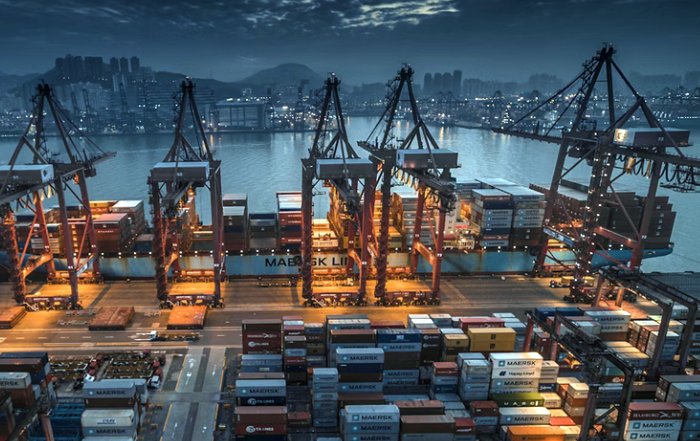Banks and Fintech Innovators: How Collaborative Finance Is Redefining Global Banking in 2025
A New Era of Collaborative Finance
By 2025, the relationship between incumbent banks and fintech innovators has shifted decisively from competition to collaboration, creating a new financial ecosystem in which traditional institutions and digital-first startups increasingly depend on each other's strengths. For the business audience of BizFactsDaily.com, this evolution is more than a sectoral trend; it is a structural transformation that affects how capital flows, how risk is managed, how customers interact with financial services, and how value is created across global markets. As regulatory, technological and macroeconomic pressures converge, collaboration between banks and fintechs is emerging as one of the most critical levers for strategic resilience and growth.
This collaborative paradigm is being shaped by several converging forces: rapid advances in artificial intelligence, the maturation of open banking frameworks, the institutionalization of digital assets, and rising customer expectations for frictionless, personalized services. Readers who follow developments in artificial intelligence and its role in finance or the broader shifts in global banking and financial services will recognize that these forces are not isolated; they form an interconnected landscape in which banks and fintechs either adapt together or risk being left behind by more agile, technology-native competitors.
From Disruption to Partnership: The Strategic Pivot
In the early 2010s, fintech startups were widely portrayed as existential threats to banks, promising to unbundle traditional financial services and capture market share across payments, lending, wealth management and cross-border transfers. However, as regulators tightened oversight and customer acquisition costs rose, many fintechs discovered that scale, trust and balance-sheet strength still favored established banks. At the same time, banks realized that their legacy technology stacks and slow innovation cycles made it difficult to keep pace with digital-native customer expectations, especially in advanced economies such as the United States, the United Kingdom and Germany.
By 2025, this mutual recognition has led to a robust partnership model in which banks and fintechs increasingly co-develop products, share infrastructure and integrate services via application programming interfaces (APIs). Industry observers tracking global business and financial trends can see that these collaborations are no longer experimental pilots but core strategic initiatives embedded in the operating models of major institutions. Reports from organizations such as the Bank for International Settlements (BIS) highlight how banks are partnering with fintechs to enhance payment systems, improve compliance and expand financial inclusion; readers can explore these dynamics in more depth through BIS analysis on technology-driven financial innovation.
Regulatory Catalysts: Open Banking, PSD2 and Beyond
Regulation has been one of the most powerful catalysts for bank-fintech collaboration, especially in Europe, the United Kingdom and increasingly in Asia-Pacific. The European Union's revised Payment Services Directive (PSD2) and the U.K.'s Open Banking framework compelled banks to open customer data-securely and with consent-to third parties, effectively forcing incumbents to build API layers and engage with fintech providers. For business leaders interested in understanding the regulatory context, the European Commission provides detailed information on PSD2 and open banking policy objectives.
These frameworks have accelerated the development of account aggregation tools, embedded finance solutions and third-party payment initiation services, many of which are designed and operated by fintechs but rely on bank infrastructure and regulatory licenses. In markets such as Singapore and Australia, regulators have taken a proactive stance by publishing roadmaps and sandboxes that encourage collaborative experimentation; for instance, the Monetary Authority of Singapore (MAS) offers insights into fintech collaboration and open finance initiatives. As more jurisdictions-from Canada and the United States to Brazil and South Africa-advance their own versions of open banking and open finance, the collaborative model is likely to become the global default rather than a regional innovation.
The API Economy and Banking-as-a-Service
At the heart of bank-fintech collaboration lies the API economy, in which financial capabilities are modularized and delivered as services that can be embedded into non-financial platforms. This "banking-as-a-service" (BaaS) model allows fintechs and non-bank brands to offer checking accounts, payment cards, lending products or savings tools, while regulated banks provide the underlying licenses, compliance frameworks and balance sheets. For readers exploring broader technology trends reshaping financial services, BaaS is a prime example of how cloud infrastructure, microservices and standardized APIs are transforming traditional banking into a set of plug-and-play components.
In the United States, JPMorgan Chase, Goldman Sachs and Bank of America have all invested heavily in API platforms that allow third parties to build on their infrastructure, while in Europe, institutions such as BBVA and ING have positioned themselves as early leaders in open banking services. The World Bank has documented how digital platforms and embedded finance can support financial inclusion and small-business growth, particularly in emerging markets; interested readers can explore World Bank research on digital financial services. As BaaS models proliferate, the line between "bank" and "fintech" becomes increasingly blurred, with many consumer-facing brands effectively operating as fintech distributors on top of bank rails.
Artificial Intelligence as the Collaboration Engine
Artificial intelligence has become a central pillar of the bank-fintech collaboration story, enabling new forms of risk assessment, fraud detection, personalization and operational efficiency. Fintechs often bring cutting-edge AI capabilities, agile data science teams and experimentation-driven cultures, while banks contribute large, high-quality datasets, domain expertise and robust governance. For decision-makers following AI's impact on financial services, BizFactsDaily's coverage of AI in business and finance provides an integrated view of how these technologies are converging with banking strategies.
Regulators and standard-setting bodies are increasingly engaged with AI's implications for financial stability, fairness and transparency. The Financial Stability Board (FSB) and OECD have both issued analyses on AI and machine learning in financial markets, including their benefits and risks; business readers can learn more about AI in financial markets from the FSB. As generative AI matures, banks are partnering with specialized fintechs to deploy AI-driven chatbots, document processing tools and advisory engines, while also working with major cloud providers such as Microsoft, Amazon Web Services and Google Cloud to ensure security, scalability and regulatory compliance. The U.S. Federal Reserve has also begun to examine AI's role in credit underwriting and model risk management, offering an official perspective on AI in the banking sector.
Digital Assets, Crypto Infrastructure and Tokenization
The rapid institutionalization of digital assets has opened another major front for collaboration between banks and fintech innovators. While early crypto markets were dominated by standalone exchanges and decentralized platforms, the landscape in 2025 is increasingly characterized by partnerships between regulated banks and specialized digital asset firms. For readers tracking developments in crypto markets and digital asset regulation, this shift reflects a broader trend toward convergence between traditional finance (TradFi) and decentralized finance (DeFi).
Banks across the United States, Europe and Asia are now working with licensed crypto custodians, blockchain analytics providers and tokenization platforms to offer services such as digital asset custody, tokenized securities, stablecoin-based payments and on-chain collateral management. The Bank of England and European Central Bank have both published extensive materials on central bank digital currencies (CBDCs) and tokenized settlement, which provide useful context on how digital money is evolving in regulated environments. These collaborations allow banks to tap into new revenue streams while managing legal and operational risks, and they give fintechs access to institutional clients, regulatory cover and mainstream distribution channels.
Customer Experience, Data and Personalization
One of the most visible outcomes of bank-fintech collaboration is the transformation of customer experience across retail, small business and corporate banking. Fintechs have set new benchmarks for frictionless onboarding, real-time payments, intuitive mobile interfaces and hyper-personalized recommendations, forcing banks to rethink their historically product-centric approaches. Business leaders interested in marketing and customer engagement strategies in financial services can see how digital experience is becoming a primary differentiator rather than a secondary consideration.
Banks are partnering with user-experience-focused fintechs to redesign mobile apps, build intelligent personal finance management tools and create data-driven advisory services that span savings, investments, insurance and credit. In markets such as the United Kingdom, Germany and the Netherlands, open banking-powered account aggregation has enabled customers to view and manage multiple financial relationships from a single interface, often delivered by a fintech but backed by multiple banks. The U.K. Open Banking Implementation Entity (OBIE) and its successor frameworks have documented how customer-centric data sharing is reshaping retail banking; executives can learn more about open banking implementation in the U.K..
Employment, Skills and the Future Workforce
The collaborative finance model has profound implications for employment, skills and organizational culture across both banks and fintechs. Traditional banks are increasingly recruiting data scientists, cloud engineers, cybersecurity experts and product managers who can work effectively in agile, cross-functional teams alongside compliance and risk specialists. At the same time, fintechs are hiring seasoned bankers, regulatory experts and operations leaders to navigate the complexities of licensing, supervision and cross-border expansion. For readers monitoring employment trends and workforce transformation, the bank-fintech nexus offers a revealing case study in how digital transformation reshapes talent needs.
International organizations such as the International Labour Organization (ILO) have highlighted the need for continuous reskilling and lifelong learning in technology-intensive sectors, including finance; business leaders can explore ILO insights on the future of work. In key markets like the United States, Canada, Australia and Singapore, public-private partnerships are emerging to develop specialized fintech and digital banking curricula, often involving universities, regulators and industry consortia. This shift is not only about technology skills; it also requires a mindset change toward experimentation, collaboration and customer-centric innovation that has historically been more prevalent in startups than in large, regulated institutions.
Risk Management, Compliance and Trust
Trust remains the central asset of the banking sector and a critical success factor for any fintech collaboration. While fintechs excel at innovation, speed and user experience, banks bring decades of experience in risk management, capital adequacy, anti-money-laundering (AML) controls and regulatory compliance. For a business audience focused on Experience, Expertise, Authoritativeness and Trustworthiness, the most successful collaborations are those that combine fintech creativity with bank-grade governance frameworks, robust internal controls and transparent reporting.
Regulators such as the U.S. Office of the Comptroller of the Currency (OCC) and the European Banking Authority (EBA) have issued guidance on third-party risk management and outsourcing, emphasizing that banks remain ultimately responsible for the activities of their fintech partners. Interested readers can learn more about third-party risk expectations from the OCC. This has led to the emergence of structured vendor-risk frameworks, joint compliance committees and shared incident-response protocols, particularly in sensitive areas such as cloud outsourcing, AI-powered underwriting and crypto-related services. As cyber threats evolve and geopolitical tensions rise, collaborative resilience-where banks and fintechs coordinate on cybersecurity, fraud detection and operational continuity-is becoming a board-level priority across North America, Europe and Asia.
Investment, M&A and Strategic Equity Stakes
The financial architecture of collaboration between banks and fintechs increasingly involves not only commercial partnerships but also strategic investments, joint ventures and acquisitions. Large banks and financial holding companies have established dedicated venture arms and innovation units that invest in promising fintech startups, often securing preferential access to new technologies and co-development opportunities. For readers tracking investment flows and capital allocation trends, these deals provide early signals of which technologies and business models are gaining traction.
Global consulting and research firms such as McKinsey & Company, Deloitte and PwC regularly publish analyses of fintech investment trends, valuations and M&A activity; executives can review McKinsey's latest insights on global banking and fintech. In markets like the United States and the United Kingdom, banks have acquired or taken significant stakes in digital lenders, payments processors, regtech providers and wealth-tech platforms, integrating these capabilities into their core operations. Meanwhile, in regions such as Asia and Latin America, super-apps and large technology platforms are forming multi-party alliances with both banks and fintechs, creating complex ecosystems that blend payments, lending, e-commerce and lifestyle services.
Innovation, Sustainable Finance and ESG Collaboration
Sustainability and environmental, social and governance (ESG) considerations are adding a further dimension to bank-fintech collaboration. As regulators and investors in Europe, North America and Asia demand greater transparency on climate risks, carbon footprints and social impact, banks are turning to fintechs that specialize in ESG data analytics, climate risk modeling and impact measurement. For readers interested in sustainable business practices and green finance, this intersection of finance, data and sustainability illustrates how collaboration can drive both compliance and competitive advantage.
Organizations such as the United Nations Environment Programme Finance Initiative (UNEP FI) and the Task Force on Climate-Related Financial Disclosures (TCFD) provide frameworks and guidance for integrating climate considerations into financial decision-making; business leaders can learn more about sustainable finance initiatives at UNEP FI. Fintechs are working with banks to develop green bonds platforms, sustainability-linked loans, carbon-tracking tools for retail customers and automated ESG reporting solutions for corporate clients. This not only supports regulatory compliance in jurisdictions such as the European Union and the United Kingdom but also enables banks to differentiate themselves in increasingly competitive markets where customers and investors scrutinize ESG performance.
Regional Perspectives: North America, Europe and Asia-Pacific
While the global trend toward collaboration is clear, regional dynamics shape how bank-fintech partnerships develop in practice. In North America, particularly the United States and Canada, a relatively fragmented regulatory environment has led to a patchwork of state and federal rules, but also to a vibrant ecosystem of BaaS providers, neobanks and specialized fintech infrastructure companies. Readers following broader economic and financial developments will recognize that U.S. and Canadian banks are balancing innovation with heightened scrutiny around consumer protection, data privacy and systemic risk.
In Europe, a more harmonized regulatory framework, anchored by PSD2, GDPR and evolving open finance legislation, has fostered a mature open banking ecosystem with strong cross-border collaboration. Banks in the United Kingdom, Germany, France, the Netherlands and the Nordics have been at the forefront of partnering with fintechs for payments innovation, digital identity, instant credit and cross-border transfers. In Asia-Pacific, markets such as Singapore, South Korea, Japan and Australia have pursued proactive, sandbox-driven regulatory strategies, while large emerging economies like India, Indonesia and Thailand are leveraging digital public infrastructure and mobile-first solutions to expand financial inclusion, often through bank-fintech partnerships.
Africa and Latin America also illustrate how collaboration can support leapfrogging in financial services. In countries such as Brazil, South Africa and Kenya, mobile money, digital wallets and instant payments systems have created fertile ground for partnerships that combine the reach of banks with the agility of fintechs. Global institutions such as the International Monetary Fund (IMF) provide valuable analysis on financial innovation and inclusion across regions, offering a macroeconomic perspective that complements the micro-level case studies often highlighted in industry reports.
Implications for Business Leaders and Founders
For business leaders and founders who follow BizFactsDaily.com to understand how macro trends translate into strategic decisions, the rise of bank-fintech collaboration carries several implications. First, financial services can no longer be viewed as a monolithic sector; instead, they form an interconnected network of regulated institutions, technology providers, data platforms and distribution partners. Executives considering new ventures or partnerships should examine where they can create differentiated value within this network, whether as infrastructure providers, customer-facing brands, analytics specialists or compliance enablers. The platform's dedicated coverage of founders and entrepreneurial strategies offers additional context for navigating this complex landscape.
Second, access to financial infrastructure is becoming increasingly democratized through APIs and BaaS models, enabling non-financial companies-from retailers and telecom operators to software firms and mobility platforms-to embed financial services into their offerings. This embedded finance trend blurs sector boundaries and creates new opportunities for cross-industry collaboration, but it also requires a deep understanding of regulatory obligations, risk management and customer data protection. Business readers can stay informed about these cross-sector developments through BizFactsDaily's broader business analysis and ongoing coverage of innovation and technology in finance at its innovation hub.
Looking Ahead: The Next Phase of Collaborative Finance
As the financial sector moves deeper into 2025, the trajectory of bank-fintech collaboration suggests that the most successful institutions will be those that combine the scale, trust and regulatory expertise of traditional banks with the agility, customer-centricity and technological sophistication of fintech innovators. This convergence is reshaping not only how financial products are designed and delivered but also how value chains are structured, how risks are shared and how competition is defined. Stock markets and investors are already adjusting their valuation models to account for platform effects, ecosystem positioning and digital capabilities, trends that readers can follow through BizFactsDaily's coverage of global stock markets and its regularly updated news insights.
For the global business community that turns to BizFactsDaily.com for authoritative, trustworthy analysis, the message is clear: collaborative finance is no longer a niche strategy or a passing phase; it is the operating system of modern banking. Whether in New York or London, Frankfurt or Singapore, São Paulo or Johannesburg, the future of financial services will be written by those who can build and manage partnerships that align technology, regulation, customer value and long-term sustainability. By tracking these developments across artificial intelligence, banking, crypto, employment, innovation and sustainability, BizFactsDaily will continue to equip its readers with the insights needed to navigate and lead in this rapidly evolving financial ecosystem.








